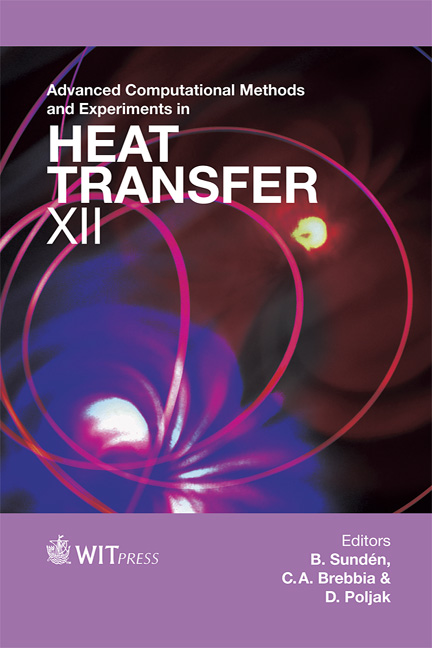EROI For The Production Of Methane From Hydrates By Hot Water Injection
Price
Free (open access)
Transaction
Volume
75
Pages
10
Page Range
221 - 230
Published
2012
Size
523 kb
Paper DOI
10.2495/HT120191
Copyright
WIT Press
Author(s)
R. C. Callarotti
Abstract
We model the heating of submarine methane hydrate deposits located at depths between 1000 and 1500 meters, when the heating is supplied by hot water flowing through a horizontal pipe located inside the reservoir. The hot water is supplied as heat exchanger output of a combined cycle power plant and then pumped at a given velocity into the horizontal pipe. By means of the enthalpy method we determine the time dependent heating of the hydrates and the amount of their melted volume. The partial energy efficiency of this process (EROI) is determined as the ratio of the equivalent energy of the gas produced to the kinetic energy required for the flow of the water at a given speed through the heating pipe. This efficiency is found to vary from a value of 20 at the beginning of the heating to a value of 2.8 after 50 years of operation. The EROI is found to be to be independent of the length of the horizontal well. Keywords: EROI, methane hydrate production, convective heat transfer, moving boundary problems, enthalpy method. 1 Introduction Methane hydrates are water-methane compounds which are present under the proper temperature and pressure conditions either at the bottom of the sea close to continental shelves or in the subsoil (Sloan [1] and Carroll [2]). They are important due to the very large amounts of methane they contain (Demirbas [3]). By 1999 Japan had already started very significant efforts to produce gas from land and oceanic deposits, and recent research has been directed to the production of methane hydrates via heated horizontal wells (Yamakawa et al. [4]). Hot water from the heat exchangers of a floating power plant is injected into the horizontal pipe inserted through the reservoir.
Keywords
EROI, methane hydrate production, convective heat transfer, moving boundary problems, enthalpy method.





